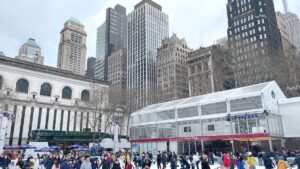Australian researchers have created building blocks from DNA to construct a range of nanoscale objects and shapes, from a rod and a square to an infinitesimal dinosaur.
The approach turns DNA into a modular material for building nanostructures – thousands of times narrower than a human hair. Developed by researchers from the University of Sydney Nano Institute and published in the journal Science Roboticsthis suggests exciting possibilities for future use of nanobot technology.
As a proof-of-concept, the authors made more than 50 tiny shapes to test their accuracy and express their creativity. It included a dragon, a dinosaur and a tiny map of Australia that was only 150 nanometers wide. (A nanometer is one millionth of a millimeter.)
Dr. University of Sydney scientist Shelley Wickham, co-author of the paper and research team leader, said the dinosaur was her favorite because it had both compact and flexible parts and was “not something that could be put together by accident”.
The director of RMIT’s micronano research facility, Prof Arnan Mitchell, who was not involved in the paper, noted that the approach relies on using DNA as a mechanical object rather than as a chemical. This was interesting, he said, because structures made of DNA were potentially small enough to be used in drug delivery.
DNA can be wrapped around a drug to protect it for delivery to a specific part of the body, he said. “Deliver it where it needs to go, and then use light or heat or something else to make it unfold and release the drug.”
With increased complexity and greater control, Wickham said the researchers’ approach could be used to make components for robotic boxes capable of delivering targeted medicine, or in the development of smart materials that can respond to the environment.
“This work allows us to imagine a world where nanobots can work on a huge variety of tasks, from treating the human body to building futuristic electronic devices.”
Wickham outlined the process. The first step involved making the 3D building blocks, called “voxels,” she said. DNA, extracted from a type of virus called a bacteriophage, was “folded” into a cylindrical shape by an approach called DNA origami and held together with synthetic DNA (made by chemists).
Voxels were formed by self-assembly, Wickham explained, which relies on carefully sequenced DNA that binds together at predetermined locations, a bit like Velcro or specialized glue.
“We throw in 300 of these staples that all have a unique DNA sequence — like a unique glue — and they find different parts of the scaffold and stitch them together,” she said.
Additional DNA strands incorporated on the outside of the voxels acted as programmable binding sites. It can be used to join voxels to construct more complex shapes and modular objects, which can be seen under an electron microscope.
“The results are a bit like using Meccano, the children’s engineering toys,” Wickham said. “As experimentalists, we spent a lot of time designing it on computers. And then we take the DNA and mix it together and it assembles itself.”



